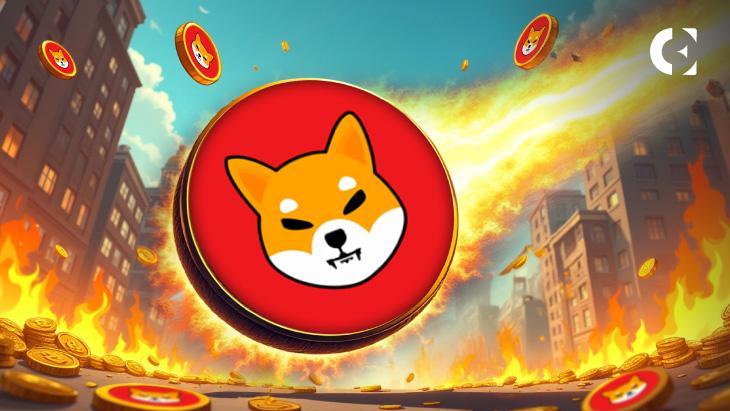SHIB Burn Rate Explodes by 4,000% Thanks to a Whale Transaction

The Shiba Inu (SHIB) community has significantly ramped up its token-burning efforts, permanently removing over 1.3 billion SHIB from the circulating supply in just seven days. This intensified deflationary pressure, which includes a dramatic 4,000% spike in the daily burn rate, comes even as the token’s market price has continued to decline.
This divergence highlights a classic crypto market scenario where a dedicated community is focused on long-term fundamentals despite facing short-term bearish sentiment.
According to data shared by community trackers, 1.338 billion SHIB tokens were burned in the week ending July 3, a 2.1% increase over the previous week. The burns are facilitated by the Shibarium layer-2 network, where a portion of gas fees paid in BONE tokens is automatically converted to SHIB and sent to a “dead” wallet, permanently removing it from supply.
The daily burn rate saw a particularly sharp increase. Data from the tracking platform Shibburn reported a surge of over 4,000% in a single 24-hour period, with 13.45 million SHIB destroyed. A significant portion of this came from a single transaction by an anonymous whale, who burned over 13.15 million SHIB, showcasing a strong, community-driven effort to reduce the token’s vast supply.
Despite the aggressive token burns, SHIB’s market value has not responded positively in the short term. Over the past 24 hours, the token’s price dropped by 1.84%, with SHIB trading near $0.00001158. Its market capitalization also slipped to $6.82 billion.
Adding to the bearish picture, trading volume fell by 38% over the past day to about $120.27 million. The low volume indicates a general lack of trading interest at current levels, suggesting that the market is not yet pricing in the long-term effects of the supply reduction.
Even with the price fluctuations, the project maintains a large and loyal investor base. Data shows that 1.51 million investors continue to hold the token, signaling a strong community belief in the long-term viability of the Shiba Inu ecosystem and its deflationary mechanics.